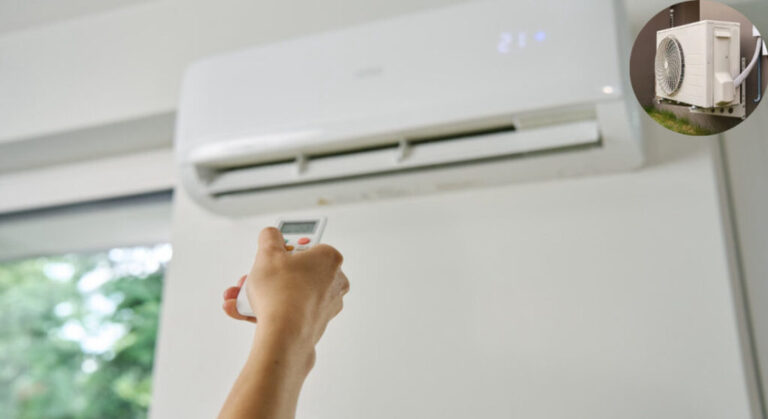Have you ever walked into your home, expecting to feel cool and comfortable, only to notice something unsettling? The air feels damp, sticky, or even humid despite having your air conditioner running all day. You’re not alone in asking, “Why does my house feel damp with AC on?” This is a surprisingly common issue that affects many homeowners.
Understanding Dampness and Humidity in Homes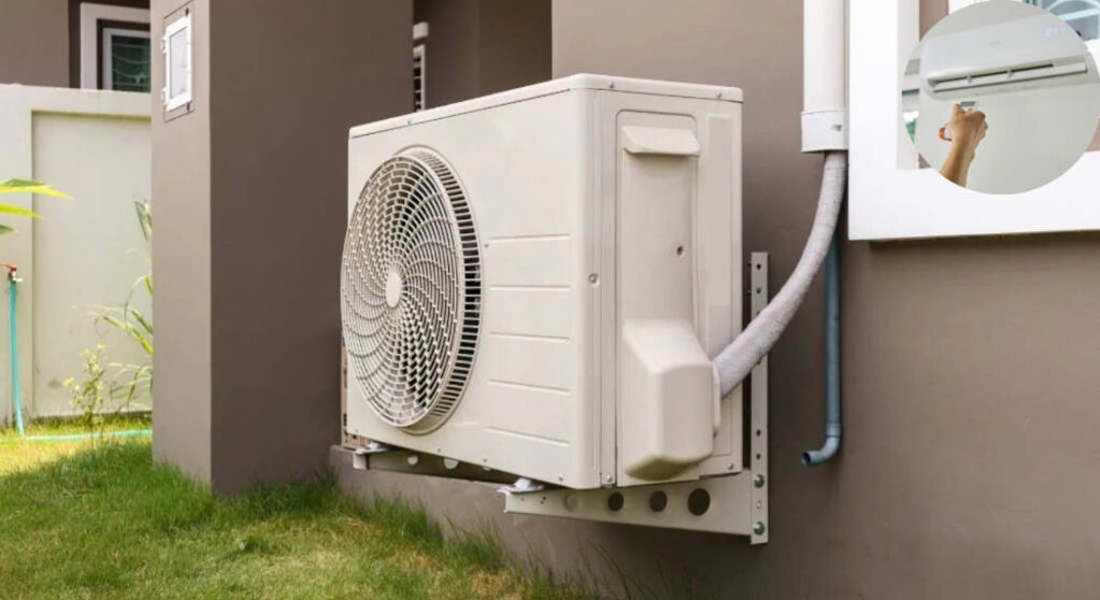
What Causes Dampness Indoors?
Dampness in homes is primarily caused by elevated humidity levels—the amount of moisture present in the air. Humidity levels above 70% create a sticky, uncomfortable feeling and can lead to other issues, such as mold growth and damage to your belongings. While air conditioners are designed to cool and dehumidify the air, they don’t always perform this function efficiently.
Several factors can contribute to damp indoor air:
- Poor ventilation or airflow
- Leaks or water intrusion
- Inefficient air conditioning systems
- High outdoor humidity infiltrating your home
If you’ve noticed that your house feels damp even when the AC is running, understanding the role of humidity is key.
The Role of Humidity: Ideal Levels and Effects
To maintain a comfortable living environment, indoor humidity levels should stay between 30% and 50%. Anything above this range can lead to:
- Physical discomfort: Rooms feel muggy, sticky, and warmer than they actually are.
- Health problems: High humidity encourages the growth of mold, mildew, and dust mites, which can trigger allergies, asthma, and respiratory issues.
- Damage to your home: Excess moisture can warp wood, damage furniture, peel paint, and create musty odors.
When your AC is functioning correctly, it should help regulate humidity. However, there are reasons it might fail to do so, leaving you with that persistent damp feeling.
Why Does My House Feel Damp with AC On?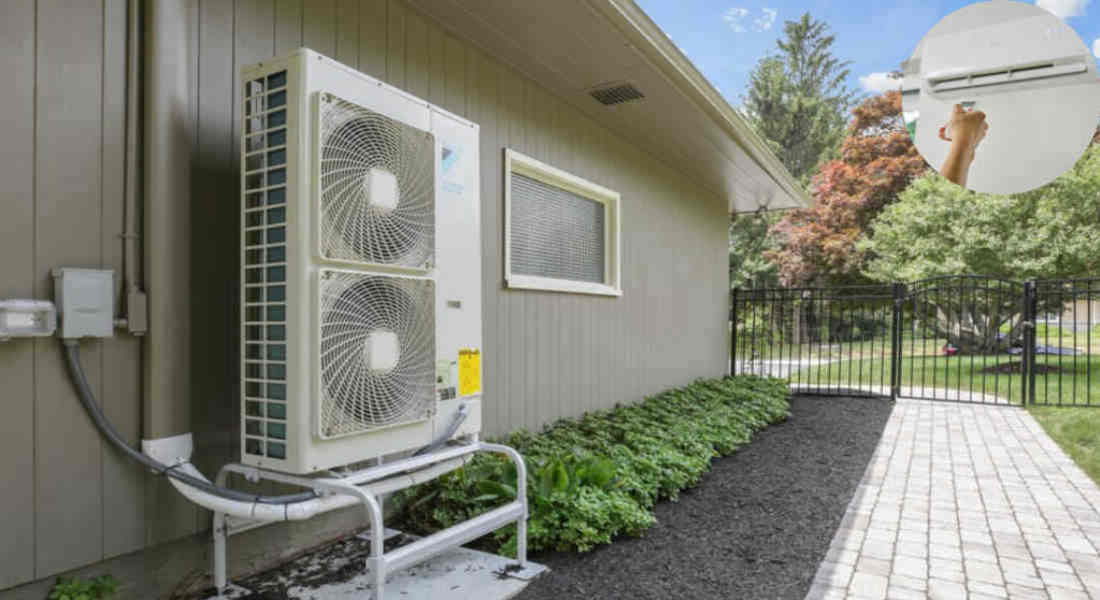
Let’s address the main question: Why is your house damp even though the AC is running? Below are the most common reasons behind this issue:
You may also read (need to rewire your house).
AC Fan Setting: “ON” vs. “AUTO”
Many AC units have a fan setting that can be switched between “ON” and “AUTO.” If your fan is set to “ON,” it runs continuously, even when the cooling cycle is off. This can blow already condensed moisture back into your home, increasing the humidity. By switching to “AUTO,” the fan will only run during cooling cycles, allowing the moisture to drain properly.
High Fan Speed
A high fan speed causes air to move too quickly across the evaporator coils. When this happens, the AC unit may cool the air but fail to remove enough moisture. Slower fan speeds allow more time for the coils to extract moisture from the air.
Dirty or Clogged Filters
Dirty air filters restrict airflow and can trap moisture inside the system, causing humidity to rise. Regularly cleaning or replacing filters is crucial for maintaining proper airflow and dehumidification.
Improperly Sized AC Units
An oversized AC unit cools the air too quickly without running long enough to remove moisture. On the other hand, an undersized unit may struggle to cool or dehumidify the air effectively. Both scenarios can lead to a damp indoor environment.
Faulty Drainage System
If the condensate drain pan or drain lines are clogged, water can accumulate and evaporate back into your home, increasing humidity levels. Regular maintenance of the drainage system can prevent this issue.
Leaky or Uninsulated Ductwork
Leaky ducts allow warm, humid air from outside to mix with the cooled air inside, reducing the AC’s efficiency and increasing humidity. Insulating and sealing your Ductwork can minimize this problem.
How Air Conditioners Remove Moisture: The Science Behind It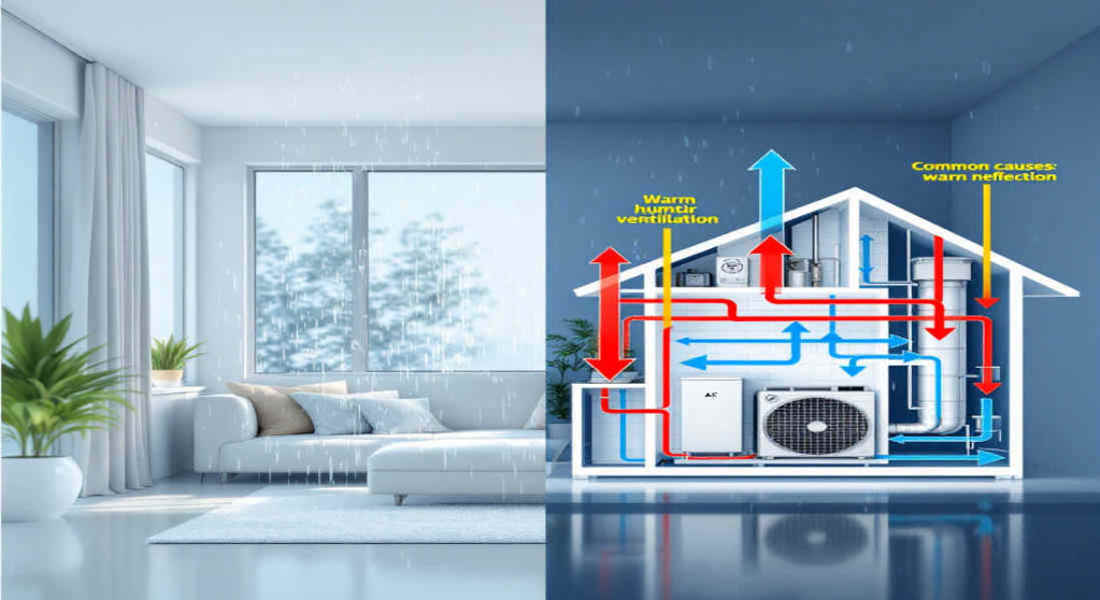
Air conditioners don’t just cool your home—they also remove moisture from the air. Here’s how the process works:
- Moisture Condensation on Coils
- As warm indoor air passes over the evaporator coils, the coils cool the air and condense moisture into liquid form. This water drips into the condensate pan and drains out of the system.
- Proper Cycling for Moisture Removal
- For dehumidification to occur, the AC must run long enough for the coils to cool and effectively condense moisture. Short cycling, characterized by frequent on/off cycles, disrupts this process.
- Cooling vs. Dehumidifying Modes
- Some AC systems feature a dehumidifying mode, where the unit prioritizes moisture removal over cooling. This can be especially useful in humid climates.
- Fan Operation and Humidity
- Continuous fan operation can blow moisture back into the air. Setting the fan to “AUTO” ensures the system has time to drain moisture during each cooling cycle.
Practical Steps to Fix Dampness When AC is On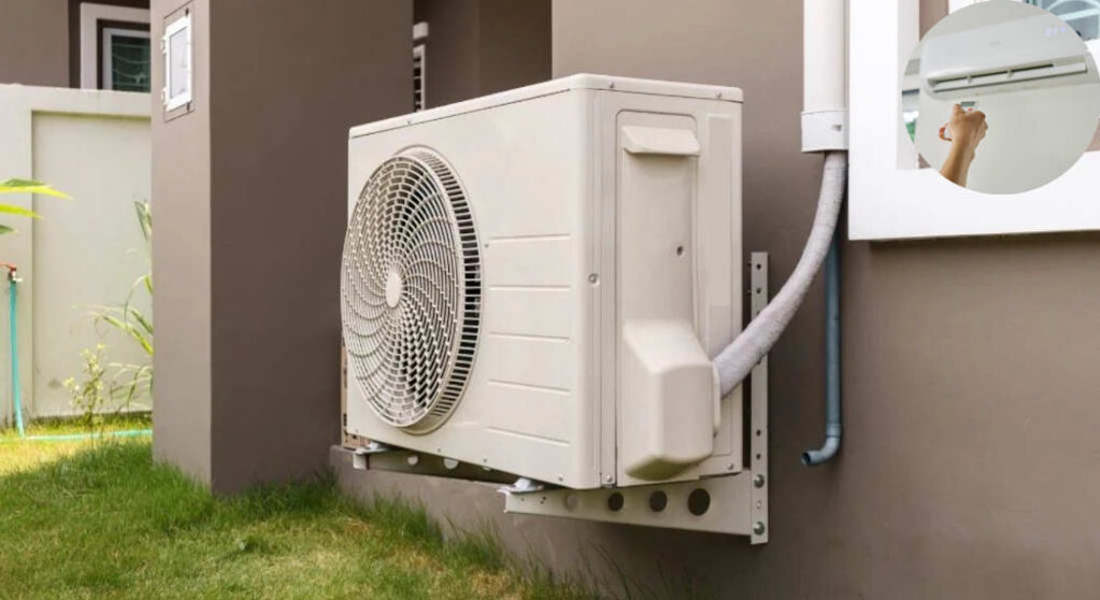
If your home feels damp despite running the AC, here are some actionable steps to resolve the issue:
Set the AC Fan to AUTO
Switch your fan setting from “ON” to “AUTO.” This ensures that moisture doesn’t get blown back into your home during non-cooling cycles.
You may also read (does my house need to be tidy for valuation).
Adjust Fan Speed to Lower Settings
Lowering the fan speed allows the AC to extract more moisture from the air. Check your unit’s manual or consult a professional to adjust the settings.
Regularly Change or Clean AC Filters
Dirty filters impede airflow and trap moisture. Replace or clean filters every 1-3 months, as recommended by the manufacturer and your usage.
Ensure Proper Drainage and Clean Drain Pans
Inspect the condensate drain pan and lines for clogs or blockages. Use a wet-dry vacuum or call an HVAC technician to clear any obstructions.
Seal and Insulate Ductwork
Use duct tape or mastic sealant to seal leaks in your Ductwork. Insulate ducts in humid areas to prevent condensation and moisture buildup.
Upgrade Home Insulation and Seal Gaps
Seal cracks, windows, and doors to prevent outdoor humidity from entering your home. Improved insulation can also reduce the workload on your AC.
Use a Dehumidifier Alongside Your AC
If your AC struggles to manage humidity, consider using a standalone or whole-home dehumidifier for extra moisture control.
Quick Reference Table: Troubleshooting Dampness
ProblemSolution
Fan set to “ON” Switch to “AUTO”
High fan speed Lower the fan speed
Dirty filters: Clean or replace filters regularly
Clogged drain lines/pans Clear blockages and ensure proper drainage
Leaky ductwork Seal and insulate ducts
High humidity infiltration Upgrade insulation and seal gaps
Additional Tips to Reduce Indoor Humidity and Prevent Dampness
Improve Home Ventilation
Use exhaust fans in kitchens and bathrooms to remove excess moisture. Ensure proper ventilation in areas prone to dampness, such as basements and laundry rooms.
Use Moisture-Absorbing Materials
Place silica gel packs, moisture absorbers, or waterproof barriers in areas where moisture tends to accumulate.
Monitor Humidity Levels
Use a hygrometer to monitor indoor humidity and ensure it remains within the ideal range of 30%-50%.
Schedule Regular HVAC Maintenance
Have your air conditioning system inspected by a professional at least once a year to ensure optimal performance and effective dehumidification.
When to Call a Professional
Sometimes, DIY fixes aren’t enough to solve persistent humidity issues. Here’s when to seek expert help:
- Your AC system is old, outdated, or inefficient.
- You notice water leaks, strange odors, or unusual noises from your AC
- Humidity levels remain high despite your efforts.
An HVAC technician can diagnose the problem and recommend upgrades, repairs, or even replacements if necessary.
You may also read (guide to pairing furniture with dark gray house walls).

